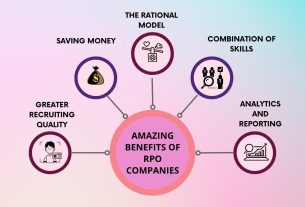The import industry must maintain efficient supply chains. A freight forwarder’s choice impacts shipping timelines. Importers often discover too late that their chosen forwarder lacks network coverage. transportify supports logistics operations that prioritize structured freight handling and consistent route management.
Evaluate their industry expertise
Freight forwarders specialize in particular cargo types. A forwarder handling pharmaceutical imports follows vastly different protocols than one shipping automotive parts. Examine whether potential partners have worked extensively with products matching your import portfolio. Request case studies from their existing client base within your industry vertical.
Forwarders with sector experience possess established knowledge of compliance requirements specific to your goods. They maintain contacts at relevant regulatory agencies and ports of entry. Consider these verification steps:
- Request documentation of previous shipments similar to your cargo specifications
- Verify their familiarity with origin country regulations and destination port procedures
- Confirm they maintain active relationships with carriers serving your preferred routes
- Ask how they manage unexpected disruptions specific to your product category
Forwarders lacking relevant experience often create delays through trial-and-error learning at your expense. Those with established expertise navigate challenges efficiently because they have encountered similar situations previously.
Assess their service coverage
Geographic reach determines whether a freight forwarder can support your current operations and accommodate future expansion. Some maintain owned offices across multiple continents, while others operate through independent agent partnerships. Both structures function effectively when properly managed, but verification of actual operational capacity remains essential. Examine these coverage dimensions before committing:
- Analyze your source markets’ office and warehouse facilities
- Door-to-door movement rather than terminal-to-terminal
- Staff who can physically inspect goods at the origin and resolve issues locally
- Network expansion plans that align with your business growth strategy
Working with forwarders that have coverage gaps forces you to manage multiple vendor relationships. This fragmentation increases coordination complexity and creates gaps in liability coverage. Complete service providers handle collection from manufacturer facilities, manage international transit, process customs requirements, and deliver merchandise to your designated locations.
Check their technology systems
Digital infrastructure separates modern freight forwarders from outdated operators still relying on phone calls and email attachments. The platforms forwarders deploy determine your visibility into shipment progress and your ability to make data-driven decisions. Evaluate systems thoroughly before partnership agreements. Essential technology capabilities include:
- Web portals providing current location data and milestone tracking for all shipments
- Electronic documentation systems eliminating paper-based bills of lading and invoices
- Application programming interfaces allowing integration with your enterprise resource planning software
- Automated alerts when shipments encounter delays or require intervention
Request demonstration access to their client platforms during the selection process. Systems should display information clearly without requiring extensive training. Poor technology forces staff to spend hours chasing status updates through manual inquiries rather than accessing information instantly through digital dashboards.
Compare pricing structures transparently
Freight forwarding quotes vary substantially in structure and completeness. Some forwarders present attractive headline rates but add numerous surcharges during actual operations. Others provide comprehensive pricing that appears higher initially but delivers better total value. Demand itemised quotations, breaking down every component. Analyze these pricing factors across multiple forwarders:
- Base transportation rates and policies regarding fuel price adjustments
- Origin charges, destination handling fees, and customs processing costs
- Special equipment requirements, storage periods, and documentation preparation
- Volume commitment discounts available for regular shipping schedules
- Payment terms, currency denomination, and rate validity periods
Calculate the complete landed cost each forwarder would generate for representative shipments. The forwarder offering the lowest ocean freight rate may actually cost more after adding fees. Transparent providers explain their pricing structures clearly. By focusing on core business rather than supply chain firefighting, the right forwarder handles logistics complexities efficiently.





